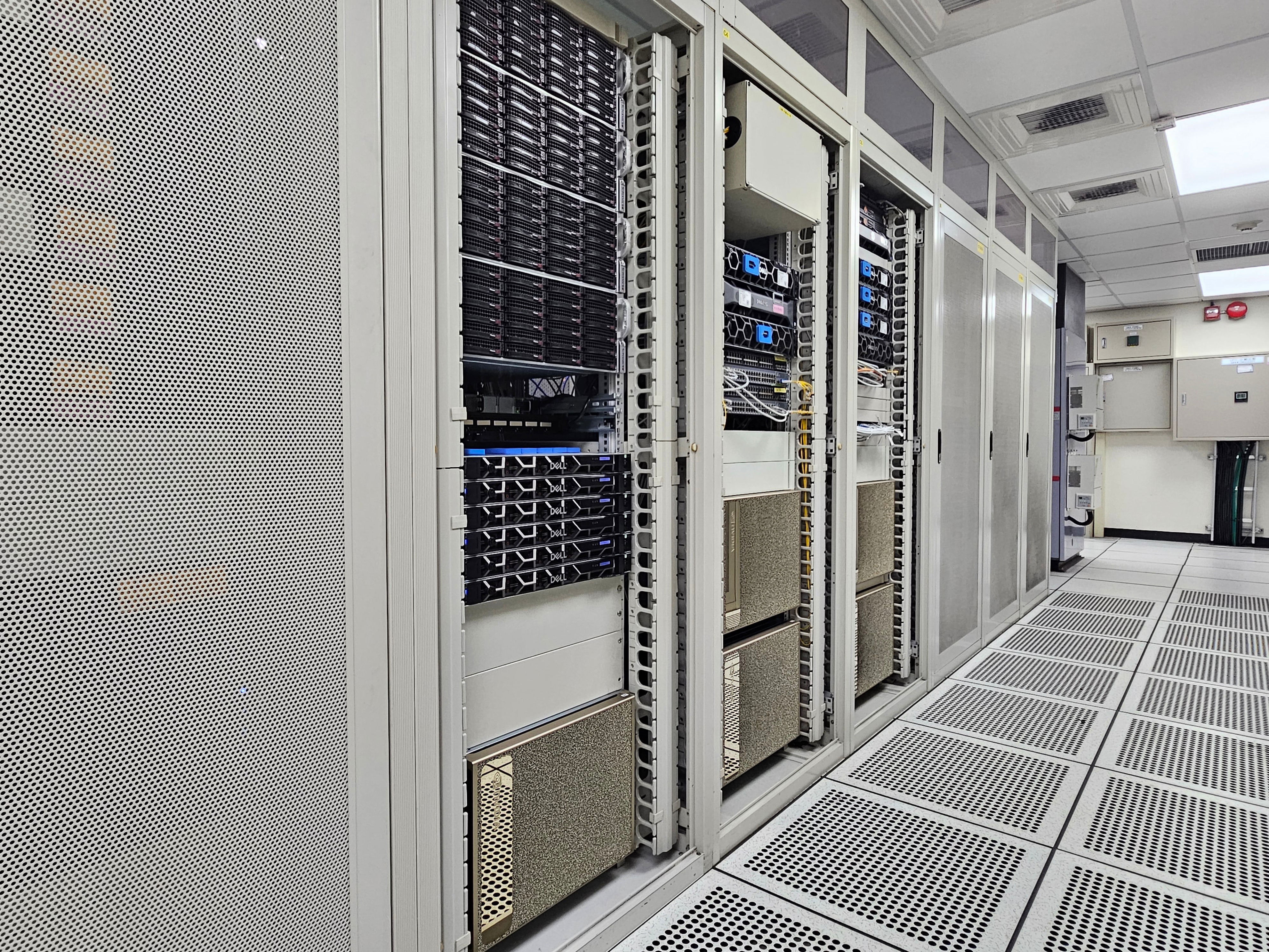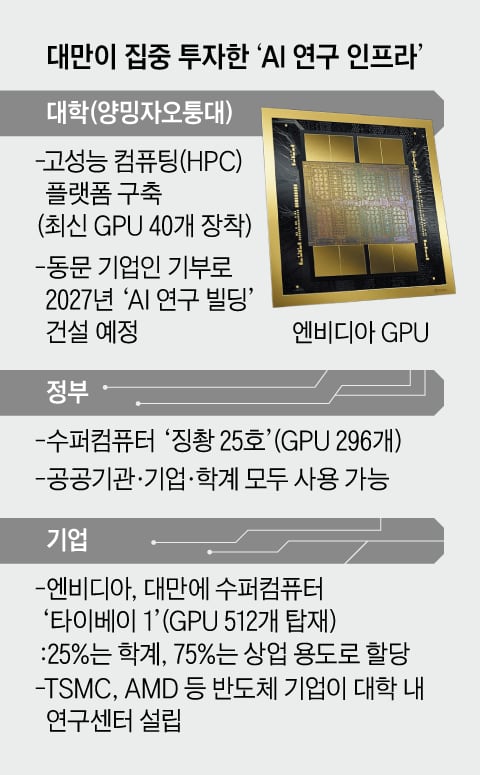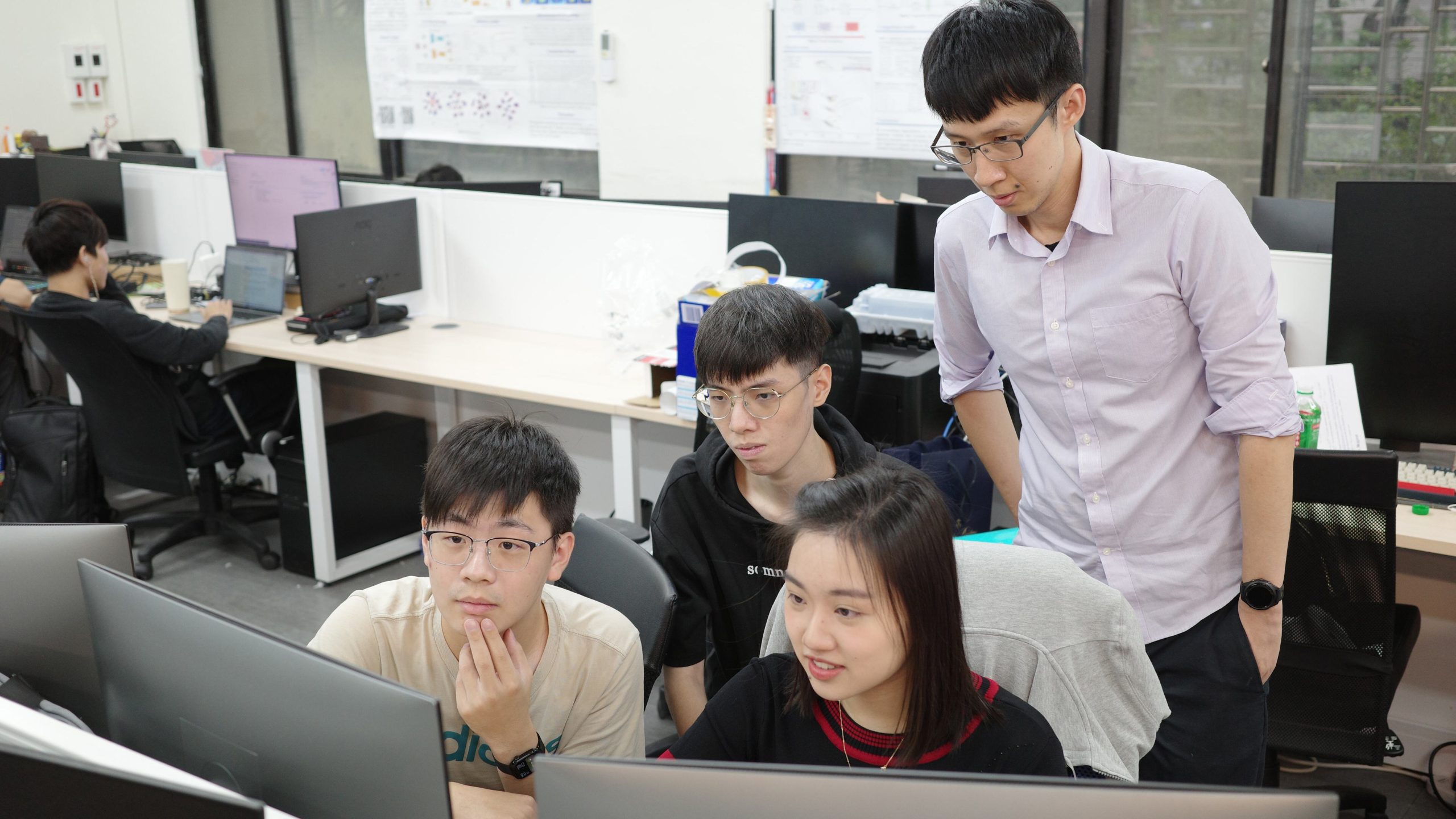
South Korea has set its sights on becoming one of the world’s top three artificial intelligence (AI) powers, announcing a budget exceeding 10 trillion Korean won for next year. This ambitious move coincides with a significant opportunity: Jensen Huang, CEO of NVIDIA, has agreed to supply 260,000 GPUs to South Korea. However, despite these developments, there is a growing concern about the exodus of AI talent from the country. South Korea’s net inflow of AI talent stands at -0.36 per 10,000 people, placing it 35th among 38 OECD countries. The industry has been vocal about this challenge, using self-deprecating remarks such as “We have cars but no drivers, guns but no bullets.” In response, this article explores the case of Taiwan, which faced similar issues with AI talent outflow but has since turned around through collaboration between the government, universities, and businesses.
During a recent visit by our reporting team to the National Yang Ming Chiao Tung University’s Information Technology Service Center, the outdoor temperature exceeded 30 degrees Celsius, but the server room inside remained cool enough for visitors to wear short sleeves. This was due to a dedicated cooling system that dissipates heat from 160 servers. In contrast, even Seoul National University’s College of Engineering has struggled to install similar facilities due to budget constraints.
At the heart of the server room is the high-performance computing (HPC) platform, the university’s central AI server. Introduced in August of last year at a cost of 3 billion Korean won, this platform is optimized for AI research and contains 40 GPUs capable of performing 1.7 quadrillion operations per second. With the HPC, the university can now build its own large-scale language model (LLM). It is known that few universities in Asia possess infrastructure of this scale. Ping-Chun Hsieh, a professor in the College of Computer Science and Engineering who conducts AI research, said, “Previously, the GPUs in our lab had limited performance and power capacity, which severely restricted the topics we could research. Now that we can use the HPC, we’ve started full-scale work on projects we had postponed.”

Advanced AI infrastructure brings talent back: Taiwan’s reversal after years of brain drain
National Yang Ming Chiao Tung University’s AI research infrastructure is set to expand further. This is because the founders of semiconductor company Phison and electronics company Wistron, both alumni of the university, have donated 63 billion and 45 billion Korean won, respectively, to build two AI research buildings on the Tainan campus by 2027. A university official said, “There is a well-established culture of alumni entrepreneurs donating to the school. The plan is not just to build buildings but to cultivate talent through ‘learning combined with practical skills’ by having industry experts and faculty collaborate on research.”
The Taiwanese government has also taken proactive steps to expand AI infrastructure. A representative example is the “Jingchuang, Crystal Creation, No. 25” supercomputer, built by the National Center for High-Performance Computing under the National Science and Technology Council. Jingchuang means “semiconductor-based innovation.” Launched in June of last year, Jingchuang No. 25 is equipped with 37 NVIDIA AI servers (H100·H200) and 296 GPUs. Both companies and universities can use it if they pass a public competition. Around the same time, NVIDIA also donated the supercomputer “Taipei 1” to Taiwan, which is open to both academia and industry. Of the total usage, 25% is allocated to academia and 75% to businesses (commercial use). In April, Jensen Huang visited Taiwan and announced plans to gift not just supercomputers but also large-scale AI infrastructure facilities, called “AI factories.” Jen-Ren Chung, a distinguished professor in the Department of Electrical Engineering at National Yang Ming Chiao Tung University, said, “The three pillars—universities, the government, and industry—are solidly building a foundation that allows Taiwanese scientists to pursue long-term AI projects.”

Taiwanese academia believes this research infrastructure will greatly help attract global talent. Professor Ping-Chun Hsieh said, “It’s very common for U.S. universities to offer conditions like ‘You can use X number of GPUs exclusively if you join our university’ to attract professors. In the future, GPUs will become a key competitive edge in attracting researchers.”
The “abundant industry-academia collaboration opportunities” are also drawing talent to Taiwan. Currently, major semiconductor companies, including NVIDIA, AMD, TSMC, and MediaTek, have opened research centers on university campuses and are actively conducting joint research. Chi-Hung Lin, president of National Yang Ming Chiao Tung University, said, “65% of the CEOs of companies in the Hsinchu Science Park, the cradle of Taiwan’s electronics industry, are alumni of our university, making strong industry-academia collaboration one of our strengths.” Chi-Yu Li, a professor in the College of Computer Science and Engineering who earned his Ph.D. from UCLA and joined the university, said, “The abundance of research collaboration opportunities with Taiwanese companies, which are leading in the semiconductor industry, was a major factor in my decision to return to Taiwan.” Professor Ping-Chun Hsieh, who earned his Ph.D. from Texas A&M University and returned to Taiwan six years ago, added, “It’s very common for companies and universities to communicate bidirectionally and collaborate on projects. This provides researchers with significant opportunities.”

Universities are also striving to attract talent by creating an environment where research can be conducted freely. For example, National Yang Ming Chiao Tung University provides researchers with “startup funds” needed when opening a new lab, separate from their salaries, and reduces administrative tasks. In particular, new professors have had their administrative duties and even teaching loads significantly reduced. This allows them to devote sufficient time to forming research groups, applying for external research funds, and building industry or global research partnerships.
Lin Xinye, 23, a master’s student in the College of Computer Science and Engineering at National Yang Ming Chiao Tung University, said, “Research infrastructure has visibly improved, and industry-academia collaboration opportunities are abundant, leading to more opportunities to secure jobs at domestic companies or become university professors. Because of this, more people are choosing to stay in Taiwan rather than studying abroad.”
